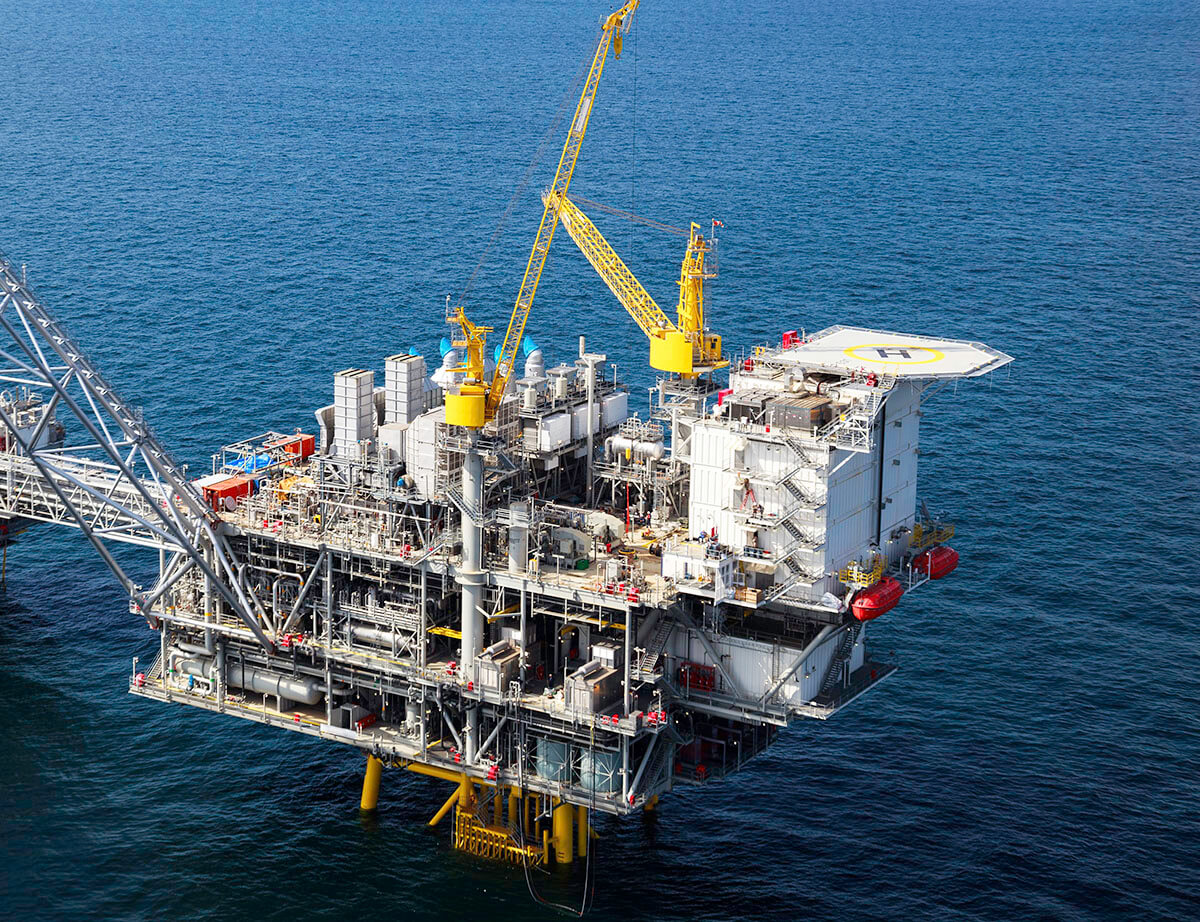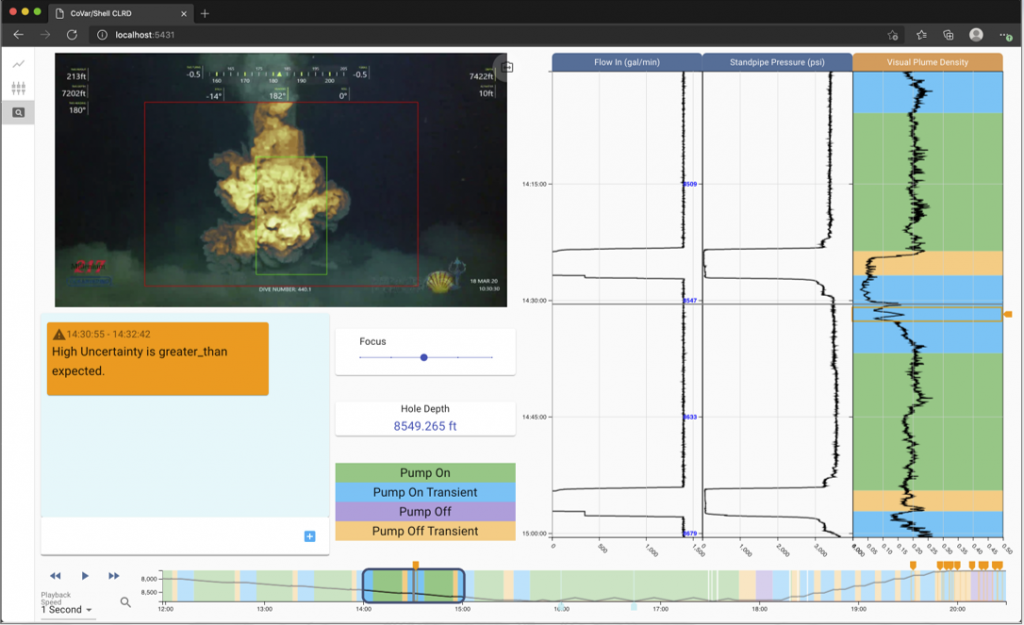Closed-Loop Riserless Drilling (CLRD)

Detecting problems with deep sea open wellbores requires 24/7 visual monitoring with humans in the loop. We built new machine learning and computer vision tools that automatically monitor a video feed from miles under water to keep rigs drilling and the environment safe.
- Computer Vision
- CLRD
- Shell
Detection in Deep Seas
Undersea drilling is complex, and monitoring rig operations is almost as big a challenge. Keeping eyes on an open wellbore can identify early indications of problems, but too often it’s little more than busy work to ensure that things are progressing as expected. What’s more, human-in-the-loop monitoring is time-consuming, subjective, and error-prone.
That’s why we partnered with Shell to build the first generation of computer vision and artificial intelligence/machine learning that fuses underwater video streams with real-time WITSML data from the cloud.

How CLRD Works
Our CLRD tool provides a real-time alarming and historical data interface that lets drilling engineers and data analysts examine data streams combined with a visual representation of the underwater scene. Our computer vision algorithms automatically estimate the size of any drilling plumes and can alert you when they deviate from their expected behaviors.
The CLRD software analyzes video and WITSML data from multiple sources, compensating for data dropouts and intermittent data connectivity. It then fuses the information into actionable data.
CLRD helps SHELL drill more wells more safely.
Explore how it can benefit your team.